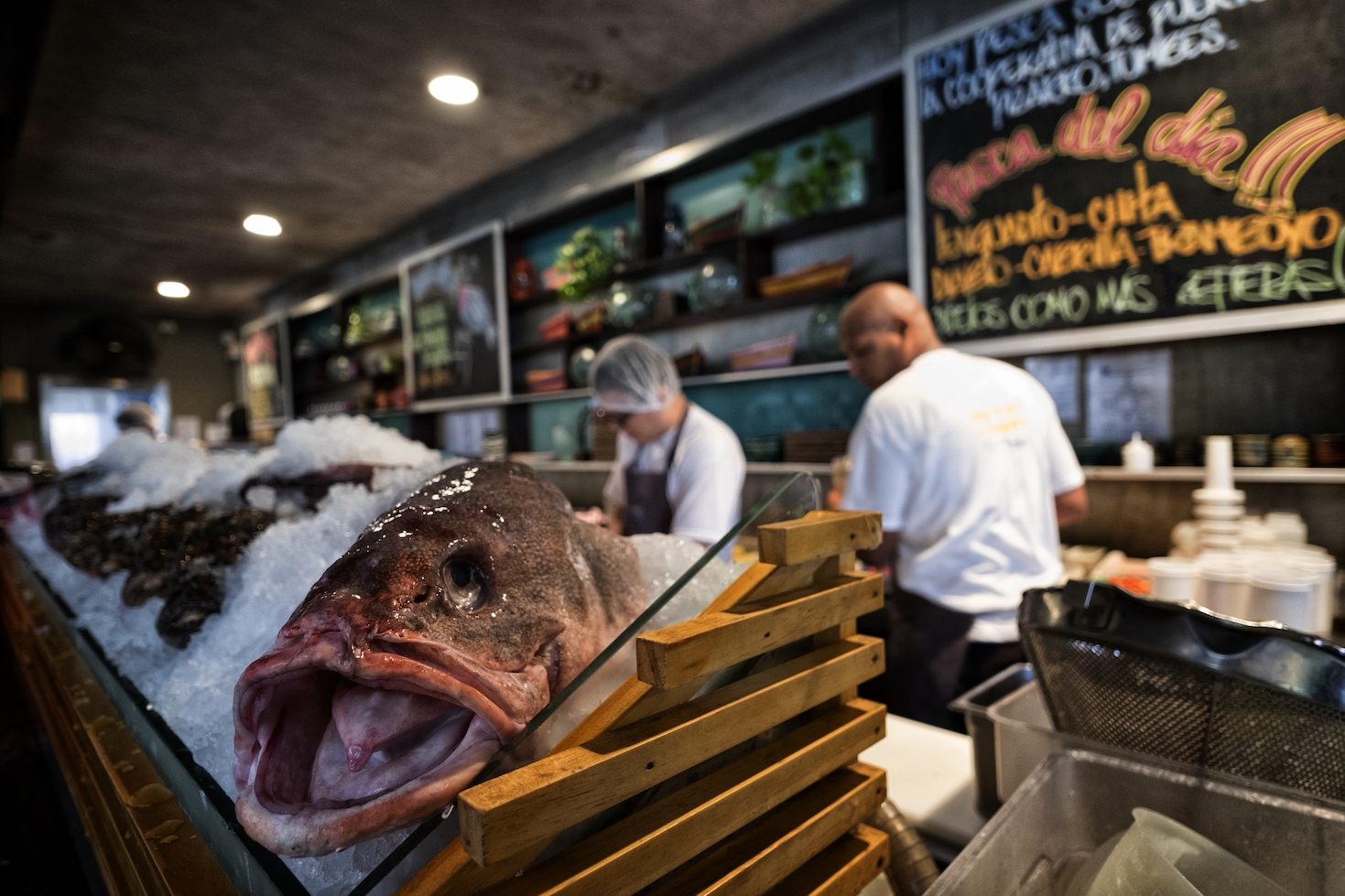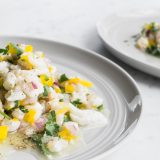Ceviche is a bracing blend of raw seafood, lime juice, chilies and vegetables. A salad in many ways. That much we know. How it gets that way? Turned out to be more of a mystery than I expected.
Most of us think ceviche is made by marinating uncooked seafood in lime juice, assuming the flesh is firmed—or “cooked”—by the acid of the citrus. This is wrong in both method and meaning.
I learned this—and more importantly, more deliciously, I tasted this—standing at the side of Peruvian mega-chef Gaston Acurio. Few chefs have done more to put this nation’s cuisine on the global menu.
I’d come to Lima, the sprawling capital of this South American nation, a wedge of metropolis between ocean to the west and desert and mountains to the east, to learn this simple dish (also spelled cebiche) from the man who gave it consciousness in the rest of the world.
We meet at Acurio’s airy La Mar, a bright, expansive restaurant where daily catches dominate both the menu and decor, where octopus and scallops marry with corn and potatoes. And always chilies.
An army of sous chefs carefully stacks massive sea creatures too numerous and too exotic to name along a bar dozens of feet long. I’m offered an espresso as I watch them prepare the “leche,” or citrus juice mixture, that will season the ceviche but not “cook” it.
It all becomes clear as Acurio and I move to an open kitchen on the other side of the room. Surrounded by mounds of bright citrus and seafood so fresh it looks ready to swim, overflowing bowls of onions and chilies, Acurio dismisses my misconceptions.
On a cutting board in front of him, he mounds slippery, pale razor clams and hunks of sea bass. All of it he cuts into 1-inch chunks. He salts them aggressively. And then we wait.
In 10 minutes, we eat side-by-side samples of each—salted and not. The difference is startling. The unsalted sea bass seems mushy. The salted pieces are firm, with a savory meatiness. It tastes like ceviche should.
This is a revelation. What about the lime juice? Acurio explains. It tastes like ceviche because the salted pieces already are. Salt, not citrus, does the “cooking” in ceviche. The lime juice has no role beyond flavor; the idea that the seafood is supposed to marinate in it is wrong.

Acid can denature protein—firming it at first, then relaxing it—but that’s not its role here. In fact, any recipe that calls for marinating seafood in citrus is wrong. In proper ceviche, the seafood is firmed only by salt.
Acurio transfers the clams and sea bass to a bowl, then adds diced red onion, a bit of cilantro, sliced chilies, plump yellow corn kernels.
Finally, lime juice. It is tossed and served within seconds. And the taste is fresh and sharp, tender, with a satisfying bite.
Piled onto a platter with rounds of cooked sweet potatoes—yet another puzzling turn—the effect is of ocean and land meeting, the lime juice a fresh breeze blowing over the two, tying them together.
And that—it turns out—is the point. Ceviche is the child of water and land. Also of love and war. It is a story of contrast, at once fresh and cool, briny and fiery. Supple and melting, firm and flecked with crunch.
It offers in one bite the story of a nation. Fishermen preserving their catch with salt and chilies. Spanish conquerors planting limes and onions. Inca farmers harvesting Andean potatoes.
“Ceviche is the son of this war [for independence from Spain] and at the same time the son of this love story between the Pacific and the Andes,” says Acurio. He dives into the history, spinning a torrid romance novel as he goes.
Like so many dishes, ceviche evolved from the need to preserve. Adding salt and chili peppers extended the life of a day’s work at sea, he explains. The sharp bite of lime was introduced when the Spanish brought it to Peru along with red onion.
Though in the U.S., ceviche is mostly a starter, here it is a substantial dish, one that calls for a starch. And because this is Peru—home to thousands of potato varieties—the starch of choice is sweet potatoes.
Across Central and South America, there are countless variations of ceviche, a dish that changes by tradition, geography, season and whatever happens to be dragged onto the boat on a given day.
Back at Milk Street, we had a few issues to sort out. First, the seafood. Acurio has access to an ocean of vibrantly fresh seafood. Our choices here often pale. We needed something accessible, both in terms of shopping and consumer willingness; razor clams were neither.
We tried large sea scallops, but they didn’t firm up enough, even when salted. White fish, such as flounder, sea bass and snapper, offered the right texture—neither too firm nor too soft—as well as a clean, briny flavor.
Celery is a traditional choice for adding crunch, but we preferred the color and flavor of diced yellow bell pepper. And a serrano chili had the right moderate heat we wanted. For the rest of the ingredients—garlic, red onion and cilantro—we kept with tradition.
Finally, how to serve. In Peru, ceviche is punctuated with roasted corn and sweet potatoes. Here, we expect a light appetizer. In a nod to bridging that divide, we substituted sweet potato chips for the hunks of sweet potatoes. They made the perfect scoop, adding crunch and contrast.
Not entirely traditional, but when we considered Acurio’s description, we felt true to the spirit of the dish.
“It’s the art of finding the freshness, the acidity and the spicy in balance,” he explained.




